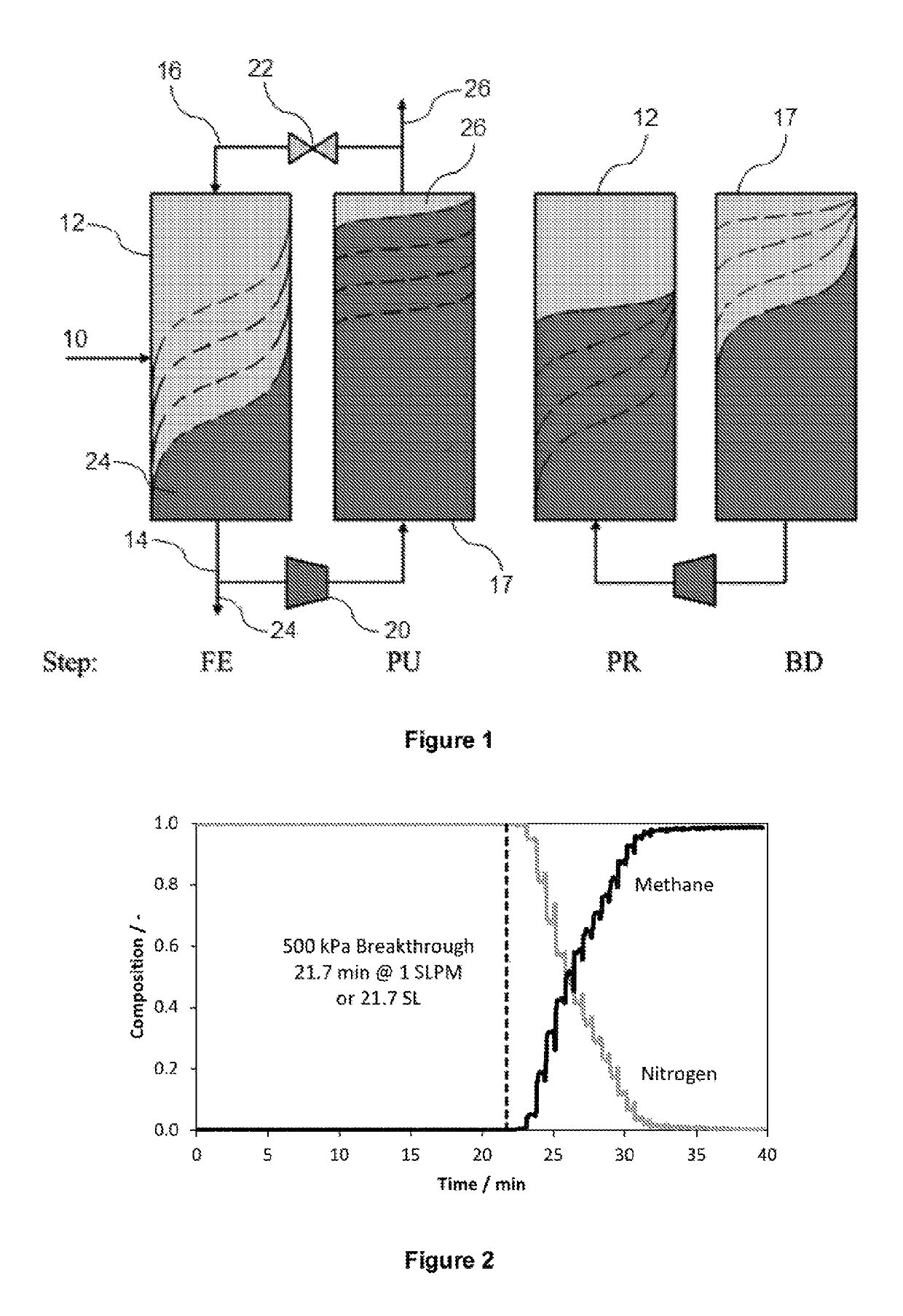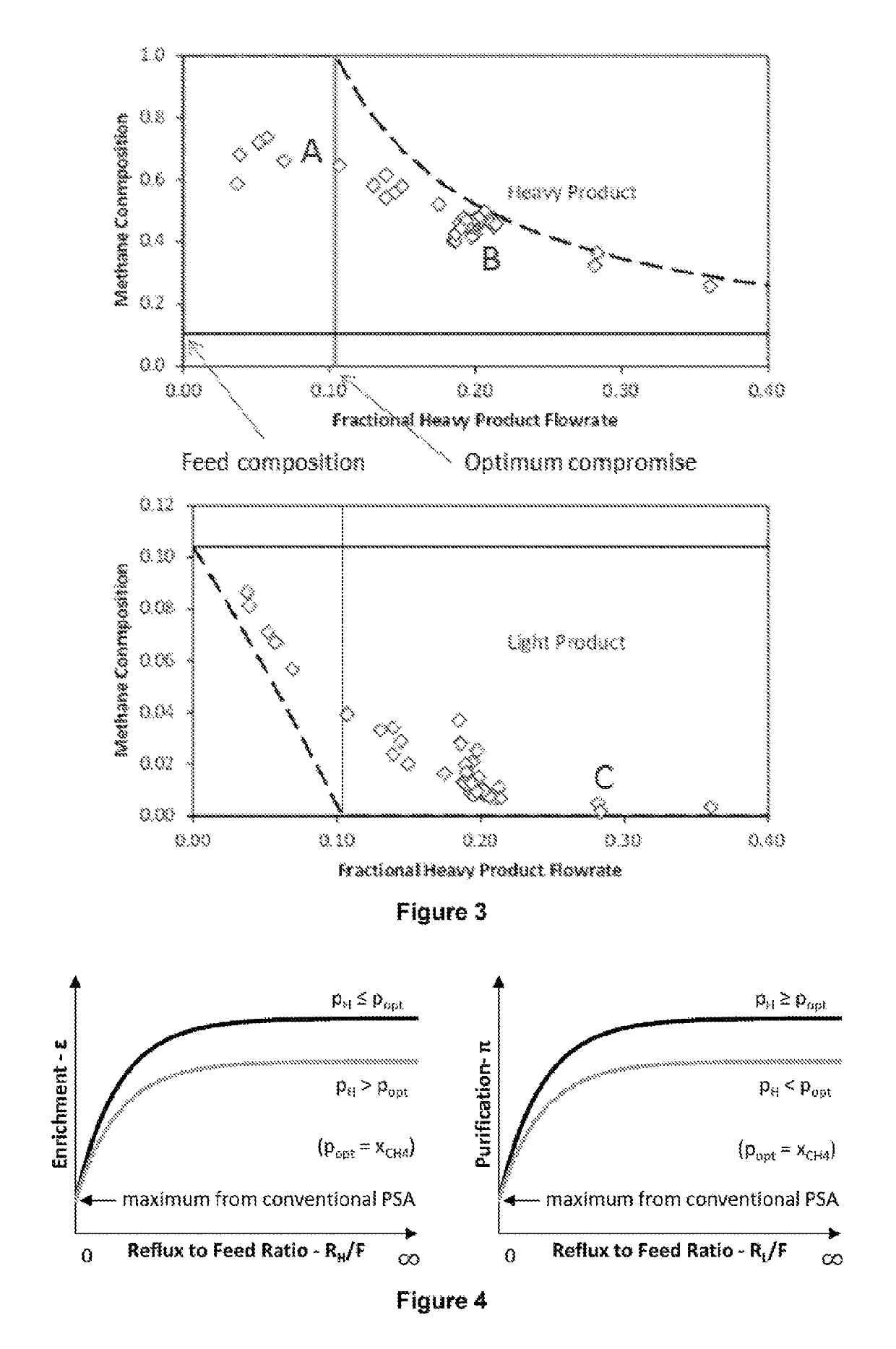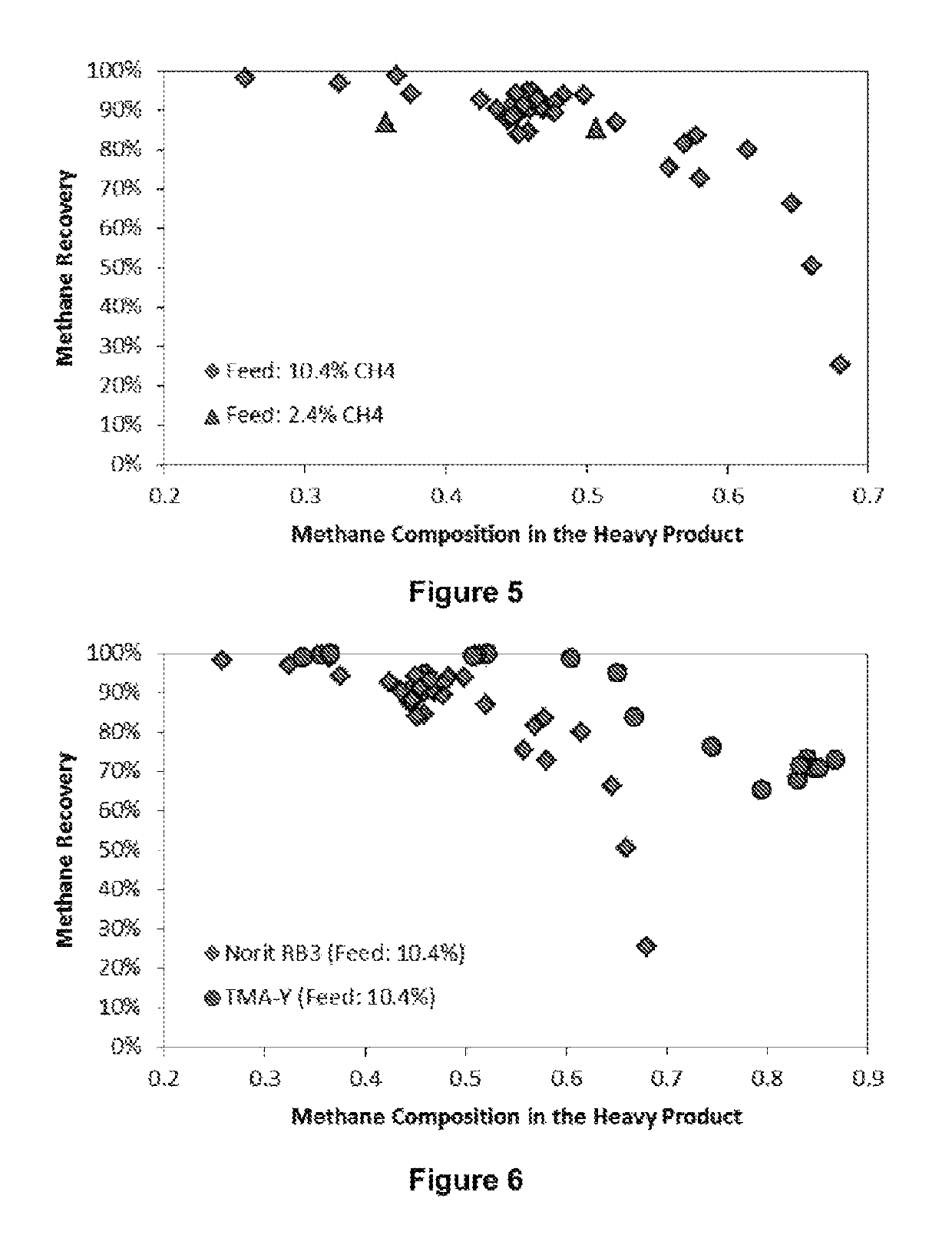Method for gas separation
a gas separation and gas technology, applied in the direction of separation processes, gaseous fuels, fuels, etc., can solve the problem that few psa designs can produce both high-quality results, and achieve the effect of high purity and recovery
- Summary
- Abstract
- Description
- Claims
- Application Information
AI Technical Summary
Benefits of technology
Problems solved by technology
Method used
Image
Examples
Embodiment Construction
[0038]The applicant has identified a process for optimising gas separation using a DR-PSA cycle for a given capital and operational cost. This description will utilise the separation of N2—CH4 mixtures by DR-PSA by way of an example to illustrate an embodiment of the invention.
[0039]A typical DR-PSA cycle includes four basic steps: feed (FE), purge (PU), pressurization (PR) and blow down (BD), which occur in the pairs FE / PU and PR / BD so that every half-cycle is symmetric with each column's state swapping during the second half. The cycle can be configured so that the feed stream enters either the high pressure (PH) column or the low pressure (PL) column. Similarly, the cycle can be configured so that the pressure inversion is carried by transferring gas between the ends of the columns that is rich in either the heavy (more adsorbed) component (A), or in the light (less adsorbed) component (B). This leads to the four DR-PSA configurations, referred to as PH-A, PH-B, PL-A and PL-B.
[00...
PUM
| Property | Measurement | Unit |
|---|---|---|
| pressure | aaaaa | aaaaa |
| temperature | aaaaa | aaaaa |
| temperature | aaaaa | aaaaa |
Abstract
Description
Claims
Application Information
 Login to View More
Login to View More - R&D
- Intellectual Property
- Life Sciences
- Materials
- Tech Scout
- Unparalleled Data Quality
- Higher Quality Content
- 60% Fewer Hallucinations
Browse by: Latest US Patents, China's latest patents, Technical Efficacy Thesaurus, Application Domain, Technology Topic, Popular Technical Reports.
© 2025 PatSnap. All rights reserved.Legal|Privacy policy|Modern Slavery Act Transparency Statement|Sitemap|About US| Contact US: help@patsnap.com



